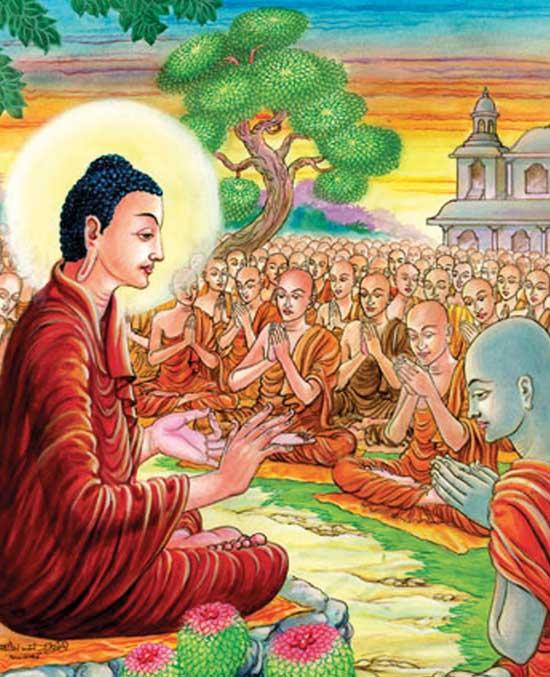Reply To:
Name - Reply Comment

Navam Perahera in Colombo, scheduled to be held on February 7 and 8, coincides with Navam Pasalosvaka Poya. A pageant which brings out rich cultural splendours associated with the Lankan Perahera tradition and organised by the Hunupitiye Gangarama Viharaya, it stands out as a contrasting scenario against the new commercial hub of Colombo 2 where ultra-modern, Singaporean-styled malls and deluxe apartments have sprung up.
Against a drastically-changing landscape, the Perahera nevertheless continues to parade Navam Mawatha with traditional troupes dancing to the sounds of getabera, thammattama, daula and conch shells. The grandly-caparisoned tusker, the highlight of the pageant, that walks majestically carrying the casket and elegantly attired elephants gently swaying to the beat of drums, create an awe-inspiring ambience. 
The pageant, virtually a live platform for performing arts, is being held by Gangarama Viharaya almost continuously since it commenced in 1979 under the patronage of the then Prime Minister R. Premadasa. Let us hope, in spite of the commercialisation that is rapidly covering the area, the pageant will continue and preserve the cultural traditions in years to come.
However, Navam Poya has deep religious significance as it was on the first Navam Poya Day following the enlightenment of Gautama Buddha that he held the first-ever Sangha Sangayanaya or congregation of the Sangha. This was just nine months after he commenced spreading Dhamma when his teachings were attracting more and more followers. By then, the numbers of those who entered the order of the Sangha had risen to 1,250.
Even in that formative stage of the Sangha order, Gautama Buddha in his wisdom foresaw that ethics and management policies would be needed to maintain discipline and moral conduct of the Sangha. The numbers of Sangha were rapidly increasing and they differed from one another. Although there had not been incidents of indiscipline and breach of conduct till then, he foresaw the likelihood of such developments in the future. Therefore, he held the inaugural Sangha Sangayanaya on the first Navam Poya Day after his enlightenment when he proclaimed a code of fundamental ethics for monks – a measure that is relevant today in the light of disturbing developments in some quarters of the Sangha. According to the Buddha, such conduct harms the doctrine.
 His proposal was to hold a “Kathikawatha” or dialogue among the Sangha to discuss and formulate ethics in keeping with the doctrine – an act that could be emulated even today to foster proper conduct among the Sangha towards the preservation of Sasanaya.
His proposal was to hold a “Kathikawatha” or dialogue among the Sangha to discuss and formulate ethics in keeping with the doctrine – an act that could be emulated even today to foster proper conduct among the Sangha towards the preservation of Sasanaya.
Until then, those who sought to enter the Bhikkhu order were ordained by the Buddha himself. With numbers fast growing and with some aspirants having to come from afar, the Buddha at the Sangayanaya delegated powers and functions to the Maha Sangha in respective areas to ordain such aspirants.
This removed the need to travel from far for ordination and enabled them to enter the order at their convenience. However, those who wanted to listen to Buddha travelled from afar (after ordination) if they needed clarification in grey areas.
It was also on a Navam Poya Day that the Buddha appointed his two chief disciples – Sariputta and Moggallana -- in spite of the fact that they were not the most senior monks in the order. Sariputta was named “Dharmasenadhipathi” and Moggallana “Dharmapurohita.” When the Buddha found that questions were raised among the Sangha about them being appointed over senior monks, he told them seniority was not the sole criterion when making appointments, but what mattered was their competence to carry out duties.
This was followed with the delivery of the famed Anusaasana “Ovada Prathimoksha” which taught monks how self-discipline could be developed. Who was Sariputta whose dedication to the doctrine was highly-appreciated by Gautama Buddha? Known as Upatissa, he was the son of Brahmin Sari which made him take up the name Sariputta following ordination.
"Navam Perahera in Colombo, scheduled to be held on February 7 and 8, coincides with Navam Pasalosvaka Poya."
Moggallana was named Kolitha. They, as young men, were close friends who were both searching for salvation. One day, they attended a sports festival called “Giraggasamajja” while finding the path to salvation. They had realised the futility of worldly desires, sensual pleasures and impermanence. It was then that they met the ascetic called Sanjaya. With him, they failed to achieve what they sought when Upatissa met Arahant Assaji who was one of Buddha’s earliest disciples.
He directed them to the Buddha who in turn ordained them. Moggallana was the first to attain Arahantship within a week and he was followed by Sariputta. They impressed the Buddha so deeply that he picked them for the most prestigious positions of chief disciples.